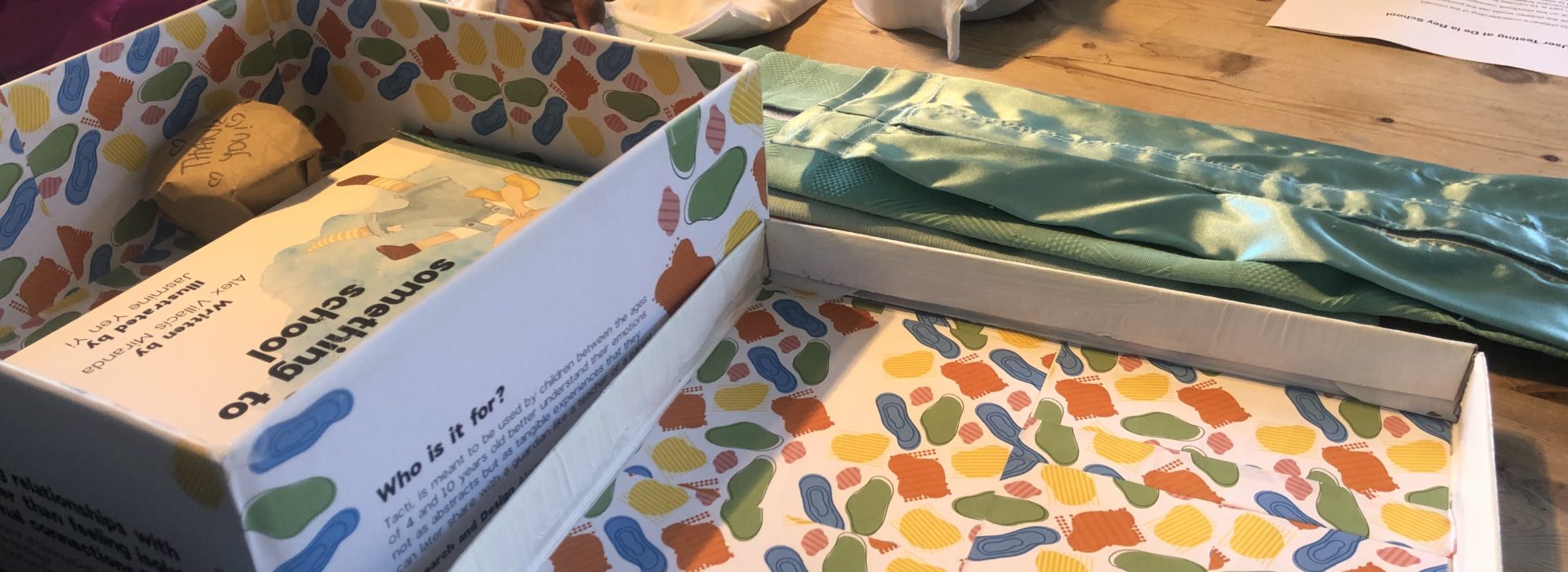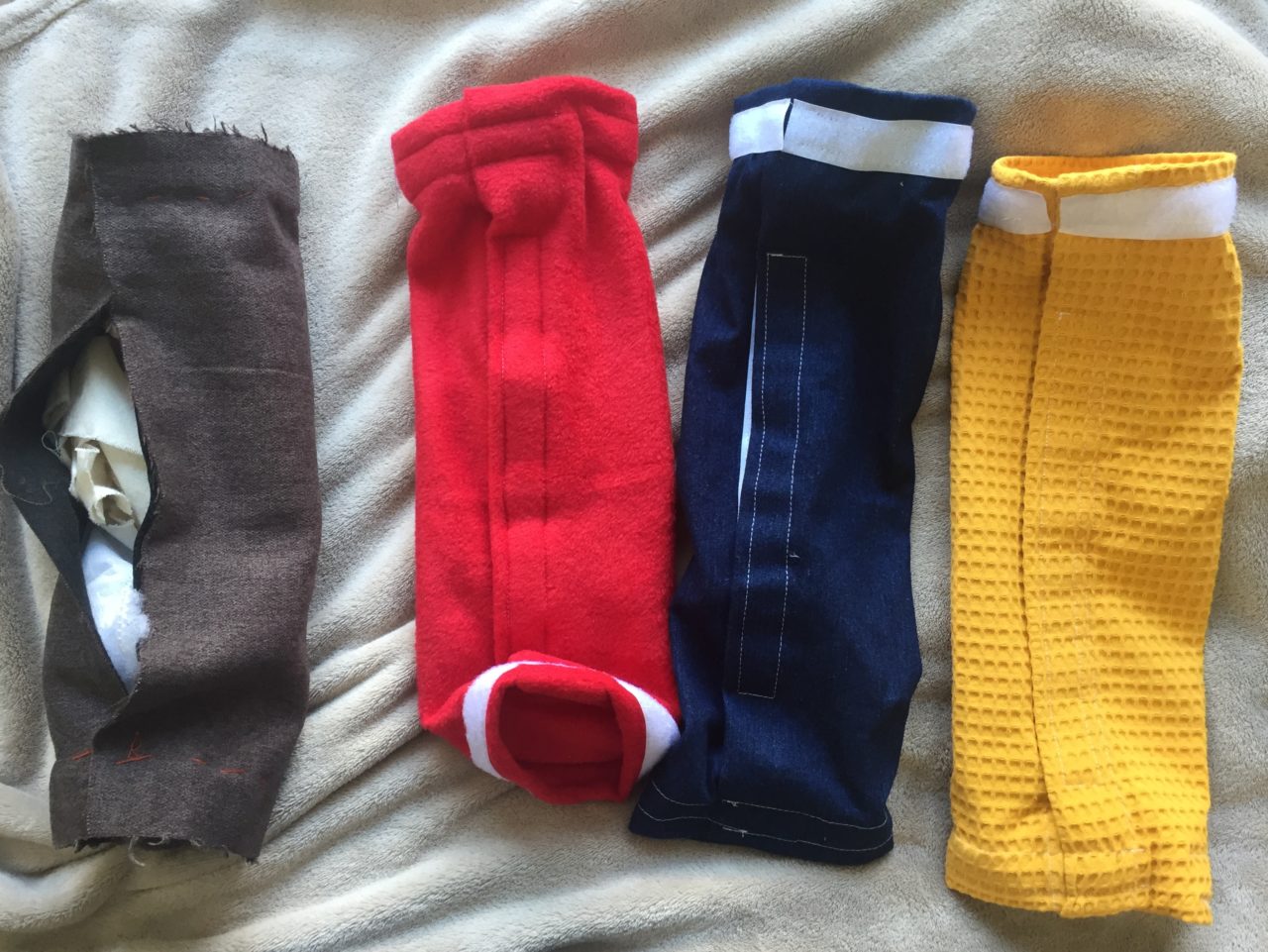Tacti – an emotional agility learning aid

Project details
- Year
- 2022
- Programme
- graphic-design
- Practices
- commercial
- Minor
- Next Design Lab
Tacti is a haptic first learning aid designed for the classroom setting to help facilitate the processing, communication and learning about their emotions.
The Tacti kit has several components meant to give the users autonomy on how to experiment with the learning aid and create a safe environment to share ideas and vulnerabilities. Anyone who has ever been in love knows that sometimes words are not enough. By combining the components and creating unique experience, Tacti allows the user to share their exact feeling with others and make sometime as abstract as an emotion tangible.

The name ‘Tacti’ comes from the Latin ‘tactus’ which means ‘touch’. We live in a highly visual society with children been exposed to screens from a young age. From the beginning, the goal Tacti was to give children the opportunity to explore something as abstract as emotions with a tangible analog object.

Working with multi-disciplinary experts is an important part of my design process. Tacti was made in collaboration with 17 different experts including parents, teachers, mental health experts, illustrators, other designers, textile experts and of course children.
“Offering our children the tools to deal with their developing emotions is invaluable to their success, and emotional skills are the bedrock of qualities such as resilience and grit.”
Susan David, Ph.D., author of Emotional Agility: Get Unstuck, Embrace Change and Thrive in Work and Life
The idea for Tacti was born on January of 2021 during a one month collaboration with a teacher looking to create a learning aid for her classroom. After finding Dr. Susan David’s work, making some rough prototypes and corroborating theories with mental health experts, the the potential for the idea to become a tangible commercial product was obvious. Wanting to devote it the time it deserved, the project was put on ice until the graduation period so it became my graduation project.

Very early prototype 
Low-fidelity 
High-fidelity prototype 
The final branded kit with 4 casings, 4 haptic experiences, a tactile story book, questions cards and box
If I’m not making it with them,
I’m not making it for them.
Following the example of Paul Polak, I can’t design for people I don’t know. Making Tacti was an iterative process of making, testing, making and testing again. Using design-thinking principles I identified wants and needs from the people who would use the product on a daily basis and implemented their feedback into each step of my design.

Testing an earlier version of Tacti and the story book mechanism 
Testing the final version of Tacti including the finished book
A vital part of my design process is to embrace my natural curiosity and ask as many questions as possible to experts, potential users, those who interact with the potential users, books and myself.
Making Tacti was a huge challenge and learning experience and I will continue developing it outside the academy to hopefully bring it to market in 2023. Be on the look out!
SPECIAL THANKS TO:
The experts who trusted me to pick their brains.
The primary school principal and teachers who trusted me with their children.
Jasmine Yen Yi for making the beautiful illustrations.
Robin Pieper and Ann M. Conefrey for your expert feedback and advice.
Marina Martínez García, Kimmy Spreeuwenberg and ginger coons for being amazing tutors.
Jasper de Koster from the Print Studio for always making sure by work is the best it can be
My mom, sister, boyfriend and friends for supporting me when I needed the most.
SOURCES THAT STRONGLY INFLUENCED THE PROJECT
“Cas Holman: Design to Play” Abstract: The Art of Design, created by Scott Dadich, season 2, episode 4, Radical Media Production and Netflix, 2019
Emotional Agility: Get Unstuck, Embrace Change, and Thrive in Work and Life. by Dr. Susan David
“Beyond Maslow’s Pyramid: Introducing a Typology of Thirteen Fundamental Needs for Human-Centered Design” by Pieter Desmet and the team at emotion studio
Body language: Embodied perception of emotion by Dr. Mariska Kret
Observing with 12 senses by Tom van Gelder